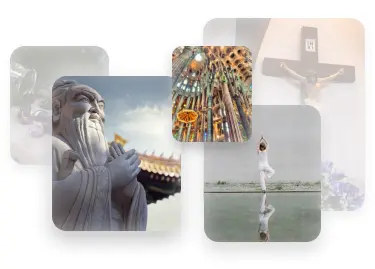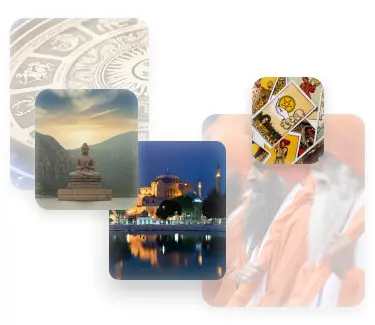Orthodoxy is widespread in Eurasia, and is represented on all other continents. Researchers note that Orthodox believers live in 75 countries of the world. Migration and missionary work spread communities of believers to both Americas, Africa and Asia.
Orthodox Christianity
Christianity is the largest religion on Earth, professed by a third of the world’s population. The second-largest christian church is orthodox christianity (Eastern Orthodox Church).
In this article we will look at the history, teaching and rituals of Orthodox Christianity.
Now the number of followers reaches 300 million people.
The traditional conservatism of the Orthodox Church hinders the growth of its popularity in the media, which does not detract from the importance of the issues that the church raises for public discussion: marriage, demography, parenting. morality and ethics.
A brief history
The year of formation of the Orthodox Church as an independent community is considered to be 1054. It was during this period that Christianity fractured into Catholic and Orthodox directions. The main reason for the collapse is considered a religious conflict between the Patriarch of Constantinople and the Roman Curia.
The split of the one universal Christian church led to the appearance of various interpretations in the conduct of rituals, the sign of the cross, the church calendar, and the creed.
Disagreements exist to this day. The Catholic Church is subordinate to the Roman Papacy, and Orthodoxy is a union of independent national (autocephalous) churches.
The essence
Orthodoxy in Greek means “true, righteous judgment.” The Orthodox worldview is based on the teachings of the apostles and the commandments of Jesus Christ unchanged. Any amendments are prohibited, as provided for in the Catholic Church
Orthodoxy is based on the Bible.
The main dogmas of Orthodoxy:
The trinity of God – God is one, but represents three hypostases: Father, Son and Holy Spirit. It is the unity of the trinity that creates the world and preserves it.
Resurrection of Christ – Jesus is mortal like all people, but he is powerful like God. Therefore, his resurrection testifies that all his teachings, sermons and faith are true.
The Ascension of the Lord is the completion of the earthly ministry of Jesus Christ and his transition to eternal life.
A unique feature of Orthodox Christianity is the traditional iconography, dating back to the earliest days of Christianity. The most common subjects of Orthodox icons are portraits of Christ, the Virgin Mary, angels and saints. The ancient tradition was almost interrupted in the IIX-IX centuries, during the period of iconoclasm in the Byzantine Empire, but the continuity of pictorial traditions has been preserved throughout the history of the Orthodox Church.
The Commandments
The commandments are a moral code of laws that form a creed.
In Orthodoxy, there are ten commandments. They are spelled out in the “Pentateuch”. All the commandments were translated by the Holy Synod in the 19th century.
Let’s consider the main rules that God has passed on to people:
- I am the LORD your God; may you have no other gods.
- Do not create idols for yourself, do not worship them and do not serve them.
- Do not pronounce the name of the Lord in vain.
- Remember the seventh day to sanctify the Lord.
- Honor your father and your mother.
- Don’t kill.
- Do not commit adultery.
- Don’t steal.
- Do not bear false witness against your neighbor.
- Do not desire someone else’s.
Rituals
Orthodoxy has a large number of sacraments and rituals. People believe that these sacred rites allow them to be closer to God.
Consider the 5 main sacraments in Orthodoxy:
Baptism. Through him, a person connects with God and becomes a member of the church. The sacrament consists of three times immersion in water in the name of the Holy Trinity. Immersion is a symbol of death, and rising from the water is a symbol of resurrection and purification. Usually baptism is carried out in infancy.
Chrismation. Its essence lies in the fact that through prayer and anointing with oil (myrrh), grace from God is transmitted.
Holy communion. Through the reception of consecrated wine and bread, each person connects with God, becomes closer to him. Communion is necessary for the salvation of the soul.
Confession. This is a confession and repentance of their sins before God and their further correction.
The wedding. This action is the laying of crowns on the heads of the newlyweds to confirm God’s blessing on the creation of a family.
Also in the church there are other rites:
Funeral. This is a worship service held over the body of the deceased. Accompanied by the reading of prayers and the blessing of the church on the way to another world.
Monastic ordination. It is performed at the initiation into the representatives of monasticism. It symbolizes the complete submission to the church, the departure from worldly life. Accompanied by cutting hair in the form of a cross. It ends with putting on monastic clothes and receiving a new name. Most often, a monastic name is given in honor of the saint on whose feast day the tonsure takes place.
Year of creation
Orthodoxy was born in 395 during the collapse of the Roman Empire.
Holidays
Orthodox holidays are significant not only for church clergymen, but also for all believers. These are the dates of veneration of important events related to saints:
There are 12 Orthodox holidays. Consider the 4 most famous of them.
Easter is the most significant holiday for the Orthodox. This day is marked by the resurrection of Jesus Christ from the dead. On the night of the resurrection, a solemn divine service and a procession take place in all churches. At home, people bake cakes and paint eggs.
Christmas is the second most important holiday. In Russia, it is celebrated on January 7. It is dedicated to the birth of Christ in Bethlehem. On this day, the Orthodox fasting ends.
The Epiphany of the Lord is a holiday dedicated to the Baptism of Christ in the Jordan. It is celebrated on January 19. According to legend, on this day the water in the reservoirs becomes holy. Therefore, in Russia it is customary to dive into an ice hole on the night of the holiday.
Palm Sunday – the holiday takes place on the sixth Sunday of Lent. After it, Holy Week begins. The holiday is dedicated to the entry of Jesus Christ into Jerusalem.
Holy places
The list of holy placees includes all places associated with the life of Jesus Christ.
Bethlehem is a city in Palestine on the banks of the Jordan River. There, according to legend, Jesus Christ was born.
Gethsemane is an area located in East Jerusalem at the foot of the Mount of Olives. There is a garden where Jesus Christ and his disciples spent time. It was here that Judas betrayed Jesus.
Golgotha is the hill where Jesus Christ was crucified. Located in the old city of Jerusalem.
Church of the Holy Sepulcher – a place where there was once a cave, over which a temple was later erected. Here Jesus Christ was crucified and resurrected. This shrine is very popular with pilgrims from all over the world.
Jerusalem is the city of ancient Palestine. It is currently the capital of Israel. Central to the life of Jesus Christ.
Tabor is a mountain in the eastern part of the Israel Valley. It was on it that the Transfiguration of the Lord took place.
Biography of the creators
Jesus Christ
Jesus Christ is the central person in Orthodoxy and in all Christianity. He is considered to be God in human flesh, designated in the New Testament as the Messiah, that is, the “king – savior”.
According to legend, he was conceived by the Holy Spirit and was born in the family of the Virgin Mary. He was engaged in the craft of his father Joseph – carpentry. He lived with his family until he was 30, and then became a preacher: he helped people, healed the sick.
He preached his teachings throughout ancient Palestine.
Many listened to the words of Jesus and became his disciples. But the more people followed Jesus, the more the ruling power hated him.
Jesus was considered a troublemaker and a rebel who undermines moral and state foundations.
Soon the trial of Jesus took place. Judas, a close disciple, betrayed him by pointing him out to the Roman soldiers. Fearing riots and the further spread of the doctrine, the Roman governor Pontius Pilate decided to execute Jesus.
Christ was to be beaten with whips, and then executed. On Mount Golgotha, Christ was nailed to a cross, condemning him to a painful death.
After three days, according to one of the central tenets of the doctrine, Christ rose from the dead and returned to his disciples to give final instructions before leaving for another world.
Modern leaders
The structure of Orthodox churches in the world is not verticalized and is divided into 4 Ancient Patriarchates, which include the Patriarchate of Constantinople, the Churches of Alexandria, Antioch and Jerusalem; 5 Junior Patriarchates including Russian, Serbian, Romanian, Bulgarian and Georgian Orthodox Churches; and 7 Metropolias (Cypriot, Greek, Albanian, Polish, Czech and Slovak and partially recognized American-Canadian and Ukrainian).
All patriarchates are independent in making decisions in their territories, many have affiliated churches and missions, but they are guided in interaction by the principles and decisions of councils.
The first among equal Orthodox bishops in the world and the spiritual leader of Orthodox Christians is the Ecumenical Patriarch of Constantinople Bartholomew I. The Patriarch of Constantinople is considered the successor of the Apostle Andrew the First-Called. Bartholomew I is the 270th patriarch of this throne.
The largest branch of Orthodox Christianity is the Russian Orthodox Church, which unites more than 150 million believers, headed by Patriarch Kirill of Moscow and All Russia.
Scandals
The Orthodox Church and its followers were persecuted for political and religious reasons no less than representatives of other ancient world religions. The most tragic examples of such persecution are the persecution of Serbian and Bulgarian Christians in the Ottoman Empire in the 17th-19th centuries, or the repressions in the ranks of the Russian Church under Soviet rule in the 20th century.
However, the most severe consequences for the clergy and followers of the faith were the historical schisms within the Christian Church itself, which brought centuries of bloody wars and irreconcilable enmity throughout Eurasia and North Africa. Prime example is the Great Schism of 1054, as a result of which Christianity split into the Orthodox and Catholic churches. The split began with the disagreements of the Seventh Ecumenical Council of 787 and became final in 1204 as a result of the destruction of Constantinople by the 4th crusade of Western Christians.
The most recent high-profile scandal within the Orthodox Christian Church is the disagreement between the Russian Orthodox Church and the Patriarchate of Constantinople that arose as a result of the intervention of Constantinople with an attempt to recognize the autonomy of the Ukrainian Church.
To summarize
Orthodoxy in Russia and Eastern Europe is developing rapidly and is supported at all levels. Every year the number of believers grows, religious spirituality strengthens, responding to the growing need to maintain the historical system of values of Eastern Christianity. New temples and churches are being built.
Modern states are trying to support the church. For example, in Russia, all temples, monasteries and churches recognized as cultural heritage are restored with money from the state budget.



 RU
RU
